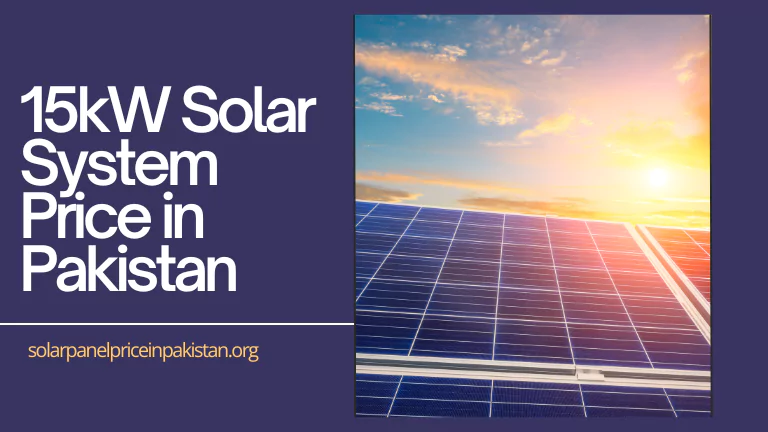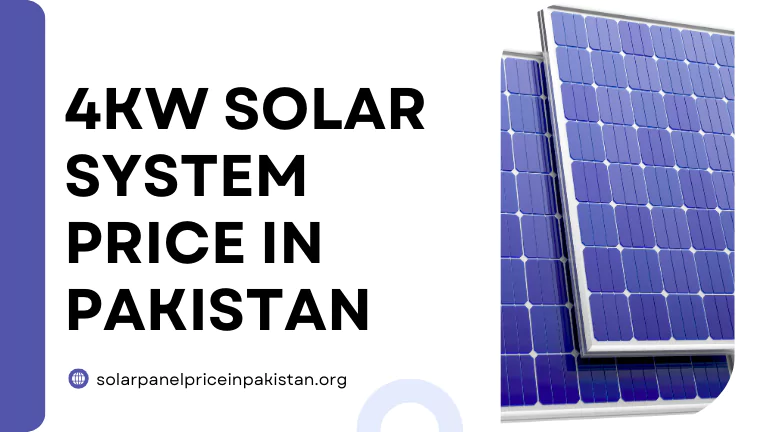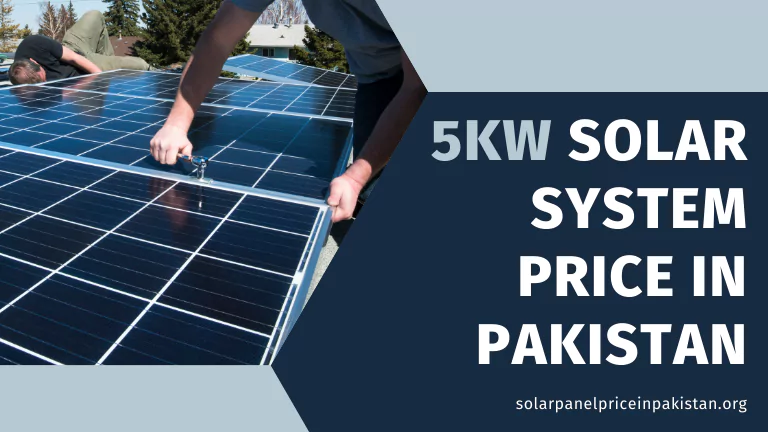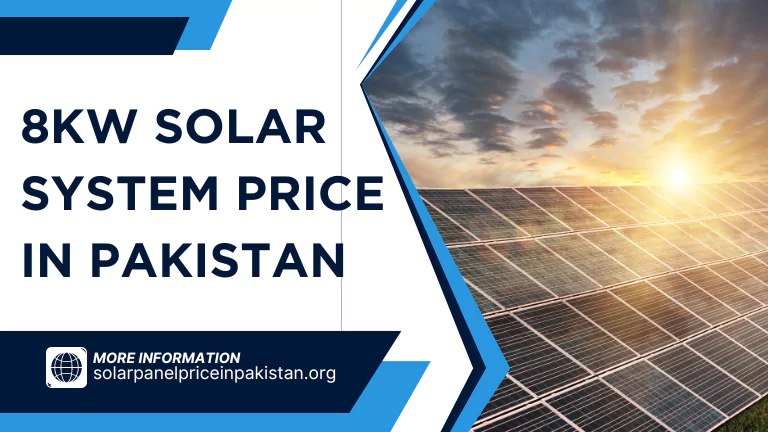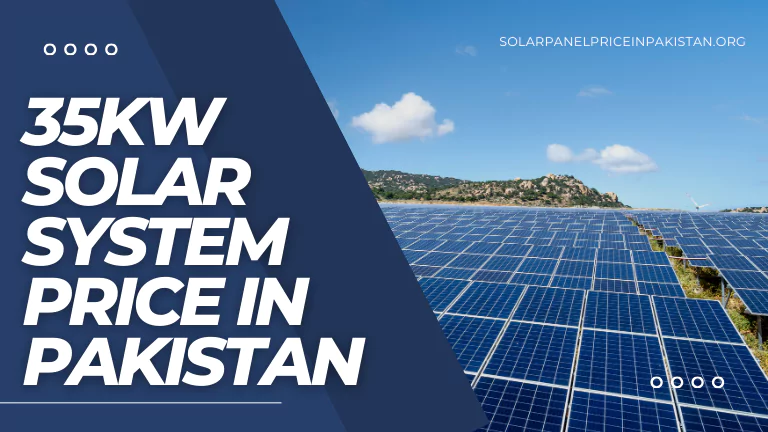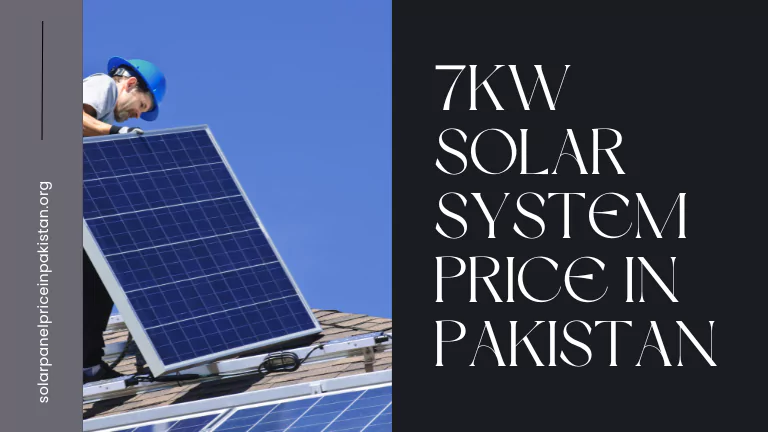20kW Solar System Price In Pakistan 2024
Solar energy is rapidly becoming one of the most efficient and cost-effective energy solutions in Pakistan, especially as electricity prices continue to rise. For homes and small businesses, a 20kW solar system offers a powerful solution for meeting energy demands while significantly cutting electricity costs.
How Much Does a 20kW Solar System Cost in Pakistan?
The price of a 20kW solar system can vary based on the quality of components and market conditions. On average, a 20kW system in Pakistan ranges from PKR 1,600,000 to 2,000,000. Below is an estimated cost breakdown:
| Component | Price (PKR) |
|---|---|
| 40 Jinko N-type 580W Bifacial Solar Panels | 835,200 |
| Solis 20 KW (On-Grid) Inverter | 438,000 |
| Installation | 78,000 |
| Frame Structure | 109,000 |
| DC/AC Protection (Complete DB Box) | 59,000 |
| DC Cables (6mm Coil) | 38,000 |
| AC/DC Earthing | 80,000 |
| Total Estimated Cost | 1,637,200 |
Prices can fluctuate based on market trends, so it’s important to shop around for quotes and compare options.
Components of a 20kW Solar System
A 20kW solar system consists of several key components that determine its efficiency:
What Can a 20kW Solar System Power?
A 20kW solar system can produce around 2400 to 2600 kWh per month, making it suitable for running a wide range of household and business appliances. On average, it can power:
This capacity is sufficient to handle the energy needs of a large house or a small to medium-sized business without overloading the system.
Types of 20kW Solar Systems
Depending on your energy needs and preferences, there are three main types of solar systems available:
On-Grid Solar System
Connected directly to the electricity grid, this system allows users to send excess energy back to the grid through net metering, receiving credits on their electricity bill. This is one of the most affordable options, as there is no need for batteries.
Hybrid Solar System
Combines solar energy, grid connection, and battery storage. If the grid goes down, stored energy in the batteries keeps your appliances running. The hybrid system is more expensive due to the added cost of batteries but offers greater energy independence.
Off-Grid Solar System
An off-grid system is not connected to the electricity grid and relies entirely on solar panels and batteries for energy. This system is ideal for remote areas but requires a larger upfront investment, especially for high-capacity battery storage.
Payback Period and Long-Term Savings
While the initial cost of installing a 20kW solar system may seem high, the system quickly pays for itself through savings on electricity bills. A 20kW system can save homeowners up to PKR 90,000 per month, depending on usage and net metering benefits.
The payback period for such a system is typically between 3 to 4 years. After this period, the system continues to generate free electricity for another 20 to 25 years, depending on the quality of components used.
Net Metering and Its Benefits
Net metering is a major benefit for solar system owners. By sending excess electricity back to the grid, you can receive credits on your electricity bill, which can drastically reduce your overall energy costs. A 20kW system, which generates more energy than most households consume, greatly benefits from net metering, making it a financially attractive option.
In Pakistan, net metering is encouraged by the government, and the process of applying for it has become simpler in recent years. Be sure to consult your installer about setting up your system for net metering from the start.
Space Requirements for a 20kW Solar System
A 20kW system typically requires around 140-150 square meters of roof space, depending on the size and efficiency of the panels used. For example, using higher-efficiency panels such as Jinko or Astro Energy N-type reduces the number of panels required and the space needed for installation.
Ensuring that the roof is free of shading from trees, chimneys, or nearby buildings is crucial to maximize the system’s efficiency.
Warranty and Maintenance
Solar panels generally come with a 25 to 30-year performance warranty, ensuring reliable energy production for decades. Inverters usually carry warranties of around 10 to 12 years, while batteries (if used in hybrid or off-grid systems) need replacement every 7 to 10 years.
Maintenance is relatively low, with occasional cleaning of the panels to remove dust and debris, especially in areas prone to dust storms. Regular checks of wiring and connections by a professional will also ensure the system remains safe and efficient.
Conclusion
Installing a 20kW solar system in Pakistan is an excellent investment, offering both environmental benefits and substantial savings on electricity bills. The initial cost is easily offset by the savings you’ll make within the first few years, especially if your system is net-metering-enabled. Whether you’re looking to power your home or run a small business, a 20kW system provides ample energy and long-term financial returns.
With solar energy being both sustainable and cost-efficient, it’s a smart choice for anyone looking to reduce their dependency on the grid while embracing a greener future.
Also Check:

